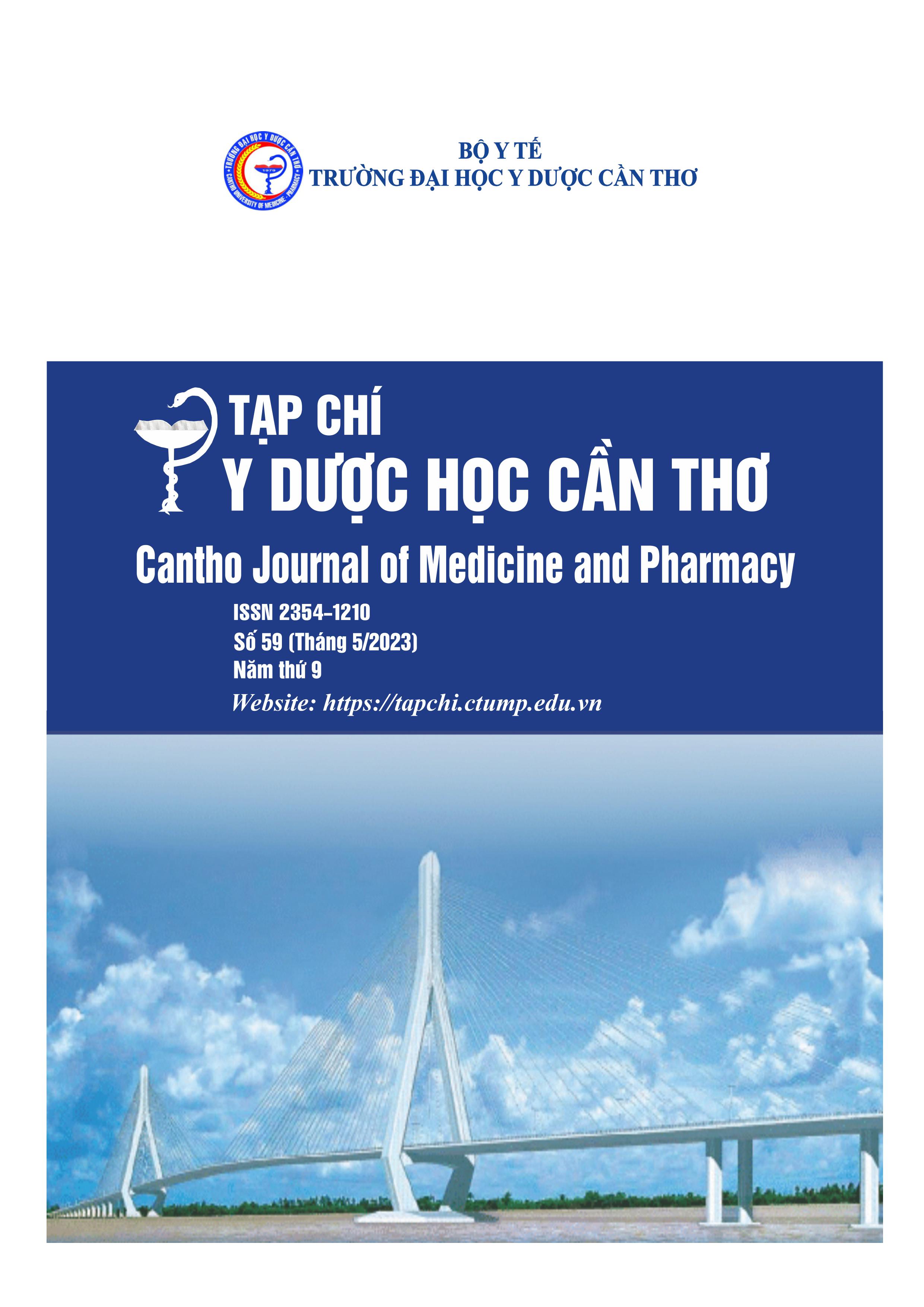PROGNOSTIC ACCURACY OF VASOACTIVE-INOTROPIC SCORE FOR MORTALITY AMONG CHILDREN WITH SEPTIC SHOCK AT THE INTENSIVE CARE UNIT OF CAN THO CHILDREN'S HOSPITAL
Main Article Content
Abstract
Backgroud: Septic shock is a common clinical syndrome in pediatric intensive care units. . In pediatric sepsis, the VIS is independently associated with clinical outcomes such as mortality, duration of mechanical ventilation, and ICU length of stay and can be used as an early predictor. Objectives: To describe clinical characteristics, evaluate treatment effectiveness and determine the association between vasoactive-inotropic score and outcome of pediatric patients with septic shock at the Intensive Care Unit of Can Tho Children's Hospital. Materials and methods: Retrospective study on 44 children diagnosed with septic shock and using vasoactive drugs during the period from January 2021 to January 2022 at the Intensive Care Unit of Can Tho Children's Hospital. Results: Clinical features: The percentage of children with fever, tachypnea, hypotension, diarrhea, lethargy were 58.5%, 90.3%, 83.9%, 43.6%, and 61.5% respectively. The majority of infections originate in the gastrointestinal tract (70%). Treatment results: 100% of septic shock cases use vasoactive drugs. Epinephrine was used the most (78%). Mortality rate is 68.3%, high in children aged 60-143 months, boys. Mortality outcome value of the VIS: VIS score at 12h and 24h has the best ability to separate with ROC of 0.712 (95% CI: 0.549-0.842) and 0.695 (95% CI: 0.532-0.829, respectively). Conclusion: Children with septic shock often have fever, tachypnea, hypotension, diarrhea, lethargy, mostly from the gastrointestinal tract. VIS at 12h and 24h has the best separation ability. VIS at 24h and 48h was negatively correlated with long-term ICU stay with statistical significance (p < 0.05).
Article Details
Keywords
Septic shock, pediatric patients with septic shock, vasoactive-inotropic score
References
2. McIntosh Amanda M., Tong Suhong, Deakyne Sara J., et al. Validation of the vasoactiveinotropic score in pediatric sepsis. Pediatric Critical Care Medicine. 2017. 18 (8), pp. 750. 3. Nguyễn Thị Minh Ngọc. Khảo sát tỷ lệ dư dịch và điểm số vận mạch ở bệnh nhân sốc nhiễm khuẩn tại khoa hồi sức tích cực chống độc Bệnh viện Nhi đồng 1 từ tháng 6/2018 đến 4/2019. Luận ăn tốt nghiệp Bác sĩ nội trú. Đại học Y dược TPHCM. 2019.
4. Nguyễn Thị Ngọc Tú. Đặc điểm lâm sàng, cận lâm sàng và kết quả điều trị nhiễm khuẩn huyết sơ sinh đủ tháng tại Bệnh viện Nhi Trung Ương (2019-2021). Luận án Tiến sĩ y học, Viện sốt rét - Ký sinh trùng - Côn trùng Trung Ương. 2022.
5. Thái Bằng Giang. Đặc điểm dịch tễ học lâm sàng nhiễm nấm ở trẻ sơ sinh và hiệu quả điều trị dự phòng bằng Fluconazole trên trẻ đẻ non, Luận án tiến sỹ y học, Đại học y Hà Nội. 2021.
6. Trần Diệu Linh. Một số nhận xét về tình hình nhiễm khuẩn sơ sinh sớm ở trẻ đủ tháng tại Trung tâm Chăm sóc và Điều trị sơ sinh Bệnh viện Phụ Sản Trung ương. Tạp chí phụ sản. 2015. 13 (2A), 118–121.
7. Gaies Michael G., Gurney James G., Yen Alberta H., et al. Vasoactive–inotropic score as a predictor of morbidity and mortality in infants after cardiopulmonary bypass. Pediatric critical care medicine. 2010. 11 (2), 234-238, https://doi.org/ 10.1097/PCC.0b013e3181b806fc.
8. Dauhan Aileen Clarissa, Lubis Aridamuriany Dwiputri, Lubis Munar. Vasoactive-inotropic score for early detection and mortality prediction of sepsis in children. The Indonesian Biomedical Journal. 2021. 13 (1), 34-39.
9. Kallekkattu Dipu, Rameshkumar Ramachandran, Chidambaram Muthu, et al. Threshold of Inotropic Score and Vasoactive–Inotropic Score for Predicting Mortality in Pediatric Septic Shock. Indian Journal of Pediatrics. 2022. 89 (5), 432-437, https://doi.org/ 10.1007/s12098021-03846-x.


